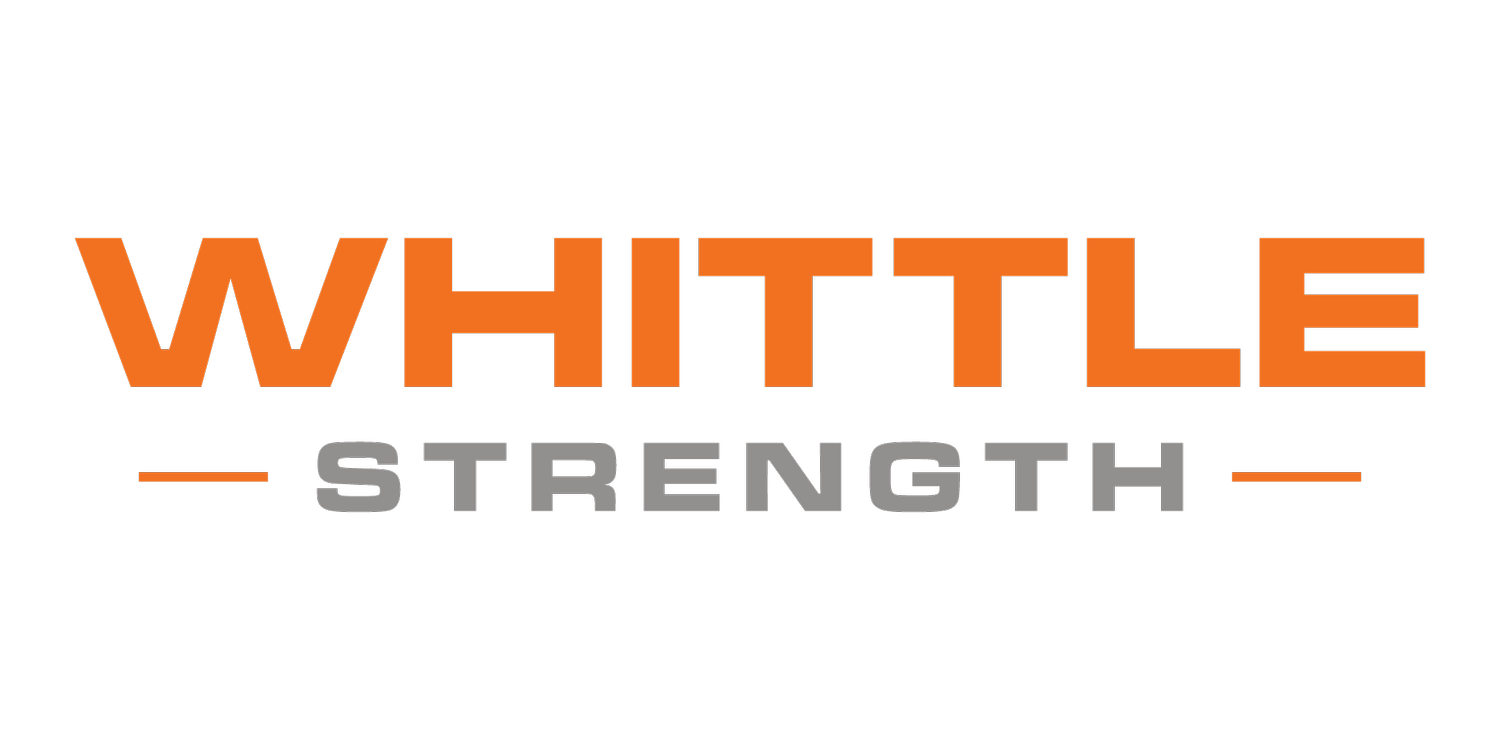WHY WE TRAIN WITH TEMPO
Here at WhittleStrength, we prioritize tempo in our structured training for clients of every level for numerous reasons. For those who don’t know, tempo training can be defined as manipulating the speed or velocity at which you perform the specific phases of an exercise. Tempo plays a crucial role in strength training as it dictates the speed at which exercises are performed, influencing muscle engagement and overall workout effectiveness. By controlling the tempo, individuals can optimize muscle tension, enhance time under tension, and promote proper form, ultimately contributing to more targeted and efficient strength gains.
Tempo training, often associated with the teachings of strength coach Charles Poliquin, involves manipulating the speed at which you perform the different phases of an exercise, such as the eccentric (lowering) and concentric (lifting) phases. While Charles Poliquin popularized this concept, it's important to note that tempo training is a widely recognized and utilized technique in various strength and conditioning programs.
When you see a workout written on the TV at WhittleStrength or on the TRI HARDER™ TRAINING APP, it will typically be written in a four-numbered sequence. For example, when you walk into our gym and take a look at our workout of the day you might see “Heels Elevated Goblet Squat (6 REPS) (3210)” written. Simply put, this means you’ll complete a heels elevated goblet squat for 6 repetitions with a 3210 tempo, you’ll start by lowering the weight for 3 seconds, pausing for 2 seconds in the bottom position, standing up in one second, and finishing the rep with no pause at the top (going right into the next rep).
Similarly, if you had a “Heels Elevated Barbell Squat” written with a 4010 tempo, it would look something like this:
Let’s break it down:
Eccentric Phase (Lowering): This is the first number written in the sequence, known as the eccentric portion of the lift. The eccentric portion of an exercise is when the muscle itself is lengthening. Looking at our goblet squat example, as you lower into the squat your quads and glutes are lengthening.
Isometric Phase 1 (Pause at Bottom): This is the second number written, known as the isometric portion of the movement. This number tells you how long to pause at the bottom of the lift. Looking at our goblet squat example, you would pause for 2 seconds at the bottom. Isometric means that the muscle is contracting but not actively lengthening or shortening.
Concentric Phase (Lifting): This is the third number in our tempo sequence, known as the concentric portion of the lift. The concentric portion of an exercise is when the muscle itself is shortening (or contracting). Looking at our goblet squat example, as you stand back up from the bottom of the squat position, your quads and glutes are shortening/contracting.
Isometric Phase 2 (Pause at Top): The final number in our sequence is also an isometric variable, but this time it tells us how long to pause at the top of the movement. Looking at our goblet squat example, you would spend no time pausing at the top and would go right into the next rep.
Benefits of Tempo Training:
Teaches Control and Improves Technique: Tempo training is a great tool for beginners, as it reinforces you to slow down and maintain control and coordination throughout the entire movement. This is important because it prevents you from rushing just to finish the set. Rushing through a set leads to bad form and an increased risk for injury. Controlling each rep also ensures you are relying on your own strength and power, not momentum. Bottom line, tempo training is great for addressing motor learning.
Improves Mind-To-Muscle Connection: By executing a lift with a specific tempo, it allows you to be more conscious and aware of your body during each phase of the movement. Rather than losing control at the bottom of the movement, or chopping the movement up, tempo training teaches you to move fluidly through a range of motion. Looking at our goblet squat example, by consciously lowering down in 3 seconds and pausing for 2 seconds at the bottom, you should noticeably be able to feel your quads and glutes more than if you rushed through a set.
Increases Time Under Tension: Time under tension can be defined as the total duration a muscle is held under tension/stress during a given exercise set. Adding tempo training to your sets forces the muscles to withstand more tension. While lifting heavier weights (i.e. back squatting 4x2 with no tempo) is important, increasing the time spent under constant tension is beneficial for numerous reasons. When you resistance train regularly, three mechanisms are needed in order to elicit muscle growth: muscle tension, metabolic stress, and muscle damage. By increasing time under tension, this increases metabolic stress and muscle damage. Increasing time under tension also causes the body to recruit more muscle fibers. In turn, the body will repair these now damaged muscle fibers by undergoing a hormonal response and signaling protein synthesis.
Reduces Risk for Injury and Target Weaknesses: As you improve your technique, your risk for injury will also decline. Tempo training forces you to lift with better control, leading to a better understanding of the movement mechanics. Not everyone performs an exercise the same, positional weaknesses vary from person to person. For example, looking at a trap bar deadlift, some people might struggle to lift the bar off the floor while others struggle to lock out at the top of the movement. Tempo training will help address these positional weaknesses and make you stronger at your weak points.
Share this post:


